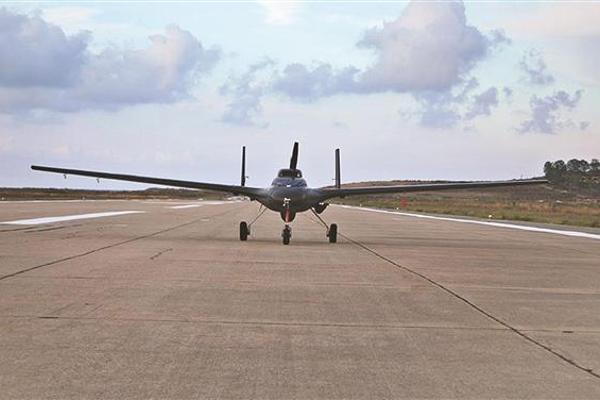Turkey’s unmanned ambitions shift up gear
BURAK BEKDİL


Turkey is moving ahead with three different local unmanned aerial vehicles: Turkish Aerospace Industries’ Anka, Kale-Baykar’s Bayraktar (below) and Vestel Savunma’s Karayel.
Shortly before parliamentary elections in 2011, several election campaign billboards of the ruling Justice and Development Party (AKP) featured blue skies with unidentified aircraft, accompanied with the slogan: “Our aircraft is in the skies!”“Our aircraft” was not in the skies by then, but was crash-landing during a series of flight tests. And “our aircraft” was the Anka, a drone Turkey was trying to indigenously develop and manufacture.
Since then, local efforts have really sent the Anka to the skies, and now, more confident, Turkey’s defense planners have broader ambitions about unmanned systems.
In an April 29 speech, Prime Minister Recep Tayyip Erdoğan said: “We have reached [a technological level] that we can produce unmanned aircraft.”
A government official elaborated on the reasons for the prime minister’s enthusiasm about the aircraft: “Erdoğan views the Anka as his signature project in national defense modernization.”
The Anka is a medium-altitude, long-endurance (MALE) drone. Such UAVs can usually operate for 24 hours at an altitude of 10,000 feet. Anka, meaning Phoenix, is the first MALE-type UAV to be produced by Tusaş Turkish Aerospace Industries (TAI).
Late last year, the Turkish government signed up with TAI for an order of 10 Ankas and ground stations. Under the deal, the first serial production deliveries will take place between 2016 and 2018.
Strong alternatives on pipeline
Earlier this year, defense procurement planners moved on a plan to add sitcom capabilities to the Anka. At the same time, they have brought together a task force that will design and develop an indigenous engine for the Anka.
Meanwhile, a version dubbed Anka+ would feature a rocket attached to its body and sensors. But TAI has ambitions beyond the Anka.
TAI officials say their work over the past year-and-a-half to build a high-altitude, long-range (HALE) drone would soon yield results. TAI’s HALE-type UAV will be a six-ton aircraft, although the company has yet to sign a contract for the HALE type with the procurement agency, the Undersecretariat for Defense Industries (SSM). Officials think the HALE drone could be useful in both military and intelligence operations.
Two more national programs are moving ahead at high speed.
The Bayraktar, a tactical drone developed by two privately owned Turkish companies, Kale and Baykar, went through its first fully automatic flight test at a military airport in Keşan in northwestern Turkey on April 29.
The company said the first test was successful, adding that a second and third test on May 3 were also “perfectly successful.” The Bayraktar flew for three hours at an altitude of 18,750 feet. Further flight tests are planned for later this year.
Kale-Baykar boasts that under the Bayraktar program, the consortium successfully developed various critical systems in drone technology, including a flight control with three back-up systems, inertial navigation and GPS systems, static pilots system, power control unit, lithium-based smart battery, aerial data recording computer, video link system, tail camera, ground control station and command and control software.
Military officials think the Bayraktar will become a preferred solution, especially in operations in Turkey’s southeast because of its “exceptional quietness.”
Another private company, Vestel Savunma Sanayi, has since 2005 been developing the Karayel, another tactical drone. The company said last month that the deliveries of six Karayel drones, three ground control stations and supportive systems would begin soon. It said it has invested $30 million for the program. Vestel Savunma said in a press release yesterday that the Karayel successfully flew at an altitude of 21,500 feet in its most recent test flight.
Procurement officials expect deliveries of both the Bayraktar and the Karayel to begin later this year.
